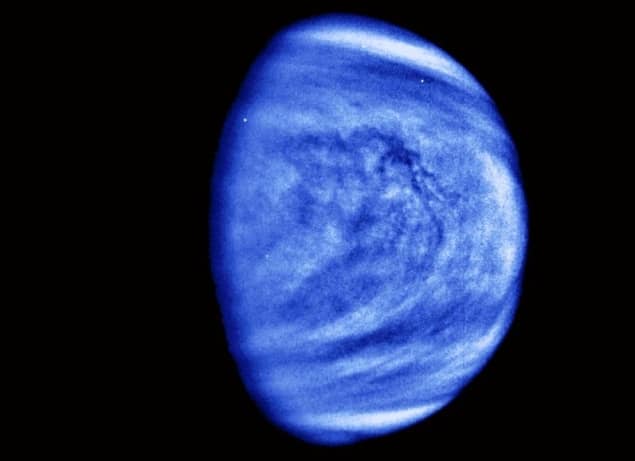
NASA has announced it will send two missions to Venus to study the planet’s atmosphere and geological features. Planned for launch between 2028 and 2030, the missions have each received $500m and will become part of the agency’s discovery programme. They represent the first dedicated NASA missions to Earth’s nearest planetary neighbour in over 30 years.
NASA says that the two new missions were chosen based on their potential scientific value and the feasibility of their development plan with the two project teams now working to finalize their designs.
We’re revving up our planetary science program with intense exploration of a world that NASA hasn’t visited in over 30 years
Thomas Zurbuchen
The Venus Emissivity, Radio Science, InSAR, Topography and Spectroscopy (VERITAS) mission will study the planet from orbit, observing primarily with a synthetic aperture radar. It will map Venus’ surface to determine the planet’s geologic history and understand why Venus developed so differently than the Earth. It will use the radar to chart surface elevations over the planet to create 3D maps of topography and confirm whether processes, such as plate tectonics and volcanism, are still active on Venus.
The Deep Atmosphere Venus Investigation of Noble gases, Chemistry, and Imaging Plus (DAVINCI+), meanwhile, will be a probe that will dive through Venus’ atmosphere to precisely measure its composition down to the surface. It will analyse Venus’ atmosphere to understand how it formed and evolved and determine whether Venus had an ocean.
A hothouse
The last dedicated NASA mission to Venus was the Magellan spacecraft that launched on 4 May 1989 to map the surface of Venus. Since then the European Space Agency launched Venus Express in 2005 and more recently JAXA’s Akatsuki craft took off in 2010, although it only arrived in 2015 after failing in its first attempt to enter Venus’s orbit, spending five years circling the Sun.
“We’re revving up our planetary science program with intense exploration of a world that NASA hasn’t visited in over 30 years,” says Thomas Zurbuchen, NASA’s associate administrator for science. “We’re ushering in a new decade of Venus to understand how an Earth-like planet can become a hothouse. It is not just understanding the evolution of planets and habitability in our own solar system, but extending beyond these boundaries to exoplanets, an exciting and emerging area of research for NASA.” What are the chances of life existing in the clouds of Venus?
The two craft missions were selected from four mission concepts that were chosen for further study in February 2020. The two probes to have missed out are the Io Volcano Observer to explore Jupiter’s volcanically active moon, Io, as well as the Trident mission to map Triton – a highly active icy moon of Neptune – to determine if the predicted subsurface ocean exists.



